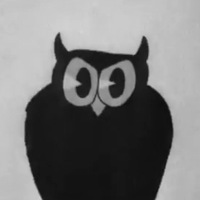
Феодальные военачальники в Японии. Сады, предназначенные для уединения и созерцания.
Выгравированный рисунок. Военно-феодальное сословие. 0
0
 0
0
Ответы на вопрос
 Внимание! Ответы на вопросы дают живые люди. Они могут содержать ошибочную информацию, заблуждения, а также ответы могут быть сгенерированы нейросетями. Будьте внимательны. Если вы уверены, что ответ неверный, нажмите кнопку "Пожаловаться" под ответом.
Внимание! Ответы на вопросы дают живые люди. Они могут содержать ошибочную информацию, заблуждения, а также ответы могут быть сгенерированы нейросетями. Будьте внимательны. Если вы уверены, что ответ неверный, нажмите кнопку "Пожаловаться" под ответом.

Сады камней
Гравюра
А вот сословие.. Смотря где.
 0
0
 0
0

Feudal Military Leaders in Japan
Feudal military leaders in Japan, known as daimyo, played a significant role in the country's history. During the feudal period, which lasted from the 12th to the 19th century, Japan was divided into numerous territories controlled by powerful daimyo. These daimyo were essentially warlords who held both military and political power within their domains.
The daimyo maintained private armies of samurai warriors who were loyal to them. These samurai served as the daimyo's military force and were highly skilled in combat. They followed a strict code of honor known as bushido, which emphasized loyalty, bravery, and self-discipline.
The daimyo often engaged in conflicts with each other, leading to frequent warfare and power struggles. They sought to expand their territories and increase their influence, sometimes through alliances and sometimes through military conquest. The daimyo who were successful in their military campaigns could gain more land, wealth, and power.
Gardens for Solitude and Contemplation
In addition to their military pursuits, the daimyo also had a strong appreciation for the arts and aesthetics. Many daimyo built elaborate gardens within their castles or residences, which were designed to provide a peaceful and serene environment for solitude and contemplation.
These gardens, known as "niwa" in Japanese, were meticulously designed and often featured elements such as ponds, rocks, bridges, and carefully arranged plants. They were intended to evoke a sense of harmony with nature and provide a space for meditation and reflection.
The design of these gardens was influenced by various artistic and philosophical traditions, including Zen Buddhism. Zen principles emphasized simplicity, naturalness, and the appreciation of beauty in everyday life. The gardens reflected these principles and were meant to be places of tranquility and spiritual renewal.
Engraved Drawings
Engraved drawings, or woodblock prints, were a popular form of artistic expression in Japan during the feudal period. These prints were created by carving images onto wooden blocks, which were then inked and pressed onto paper to produce multiple copies.
Woodblock prints depicted a wide range of subjects, including landscapes, historical events, scenes from everyday life, and portraits of famous individuals. They were often used to illustrate books, convey narratives, or serve as decorative art.
One of the most famous examples of woodblock prints in Japan is the ukiyo-e genre, which flourished during the Edo period (1603-1868). Ukiyo-e prints depicted various aspects of urban life, such as kabuki actors, courtesans, and famous landmarks. They were highly sought after by both the common people and the elite.
Military Feudal Class
The military feudal class in Japan consisted of the samurai warriors who served the daimyo. The samurai were highly trained in martial arts and warfare and were considered the elite warrior class of feudal Japan.
Samurai warriors followed a strict code of conduct known as bushido, which emphasized loyalty, honor, and self-discipline. They were expected to serve their daimyo with unwavering loyalty and to uphold the values of courage, integrity, and self-sacrifice.
The samurai class had a hierarchical structure, with higher-ranking samurai holding more power and privileges. They were granted land and received stipends from their daimyo in exchange for their military service. Lower-ranking samurai often served as retainers or administrators within the daimyo's domain.
The samurai class gradually declined in influence and power during the late feudal period as Japan underwent significant political and social changes. With the rise of a centralized government and the end of the feudal system in the 19th century, the samurai class was officially abolished, marking the end of an era in Japanese history.
Note: The information provided above is based on search results snippets. For more detailed and comprehensive information, it is recommended to refer to additional sources.
 0
0
 0
0
Топ вопросов за вчера в категории История
Последние заданные вопросы в категории История
-
Математика
-
Литература
-
Алгебра
-
Русский язык
-
Геометрия
-
Английский язык
-
Химия
-
Физика
-
Биология
-
Другие предметы
-
История
-
Обществознание
-
Окружающий мир
-
География
-
Українська мова
-
Информатика
-
Українська література
-
Қазақ тiлi
-
Экономика
-
Музыка
-
Право
-
Беларуская мова
-
Французский язык
-
Немецкий язык
-
МХК
-
ОБЖ
-
Психология
-
Физкультура и спорт
-
Астрономия
-
Кыргыз тили
-
Оʻzbek tili



















